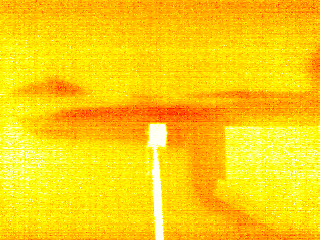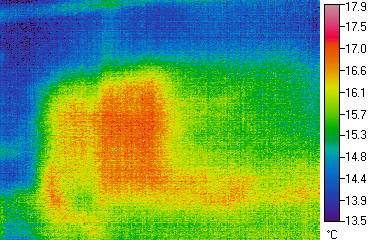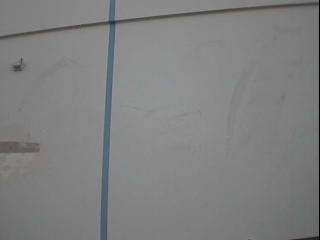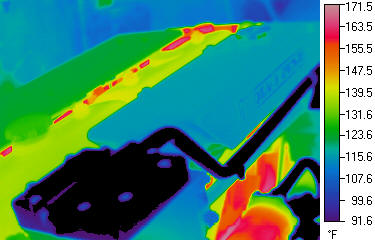|
Thermal Imaging
Our Thermal Imaging Division, STIS Thermal Imaging Services, provides a wide array of Radiometric Thermal
Imaging Services for non-destructive testing of materials, structural integrity,
electrical systems and engine components and cooling systems. Applications
are unique to environmental surroundings and the ability to control
thermal transitions. STIS certified
thermographers use state of the art thermal imaging
equipment to perform their inspections and confirm findings
with conventional equipment.
Applications span well beyond the marine industry and
include residential and commercial structure inspections for
water damage, leaks and a variety of other applications.
This service has proved invaluable to our clients who
suffered damage to their properties resulting from
hurricanes, tropical storms, construction deficiencies, etc.
After widespread damage, such as that from
hurricanes, concentrated in a specific geographical
location, many home and business owners are left to deal
with insurance adjusters that are only equipped with the
experience and knowledge to offer settlement based on
visible damage. Our thermal imaging service can
identify water damage to structures, insulation,
flooring, etc. that is not visible to the naked eye and has saved thousands of dollars for our
clients.
Following are several examples of the
services we provide: Residential
Structure Water Intrusion: The
inspection revealed more than 3 times the damage sighted by
the adjuster for the insurance company. The following
pictures depict the thermal image, clearly showing the water
damage, and the visible image (taken simultaneously) which
shows no clear visible indication of the extent of water
damage in this area.


Composite Hull Delamination:
This vessel was washed ashore into a stand of
trees by a tidal surge from a recent hurricane. Repair
facilities have a difficult task in preparing estimate for
repair when the extent of damage cannot be determined by
conventional means without destructive testing (drilling,
cutting, etc.) and even then the full extent of damage may
not be known until repairs are underway. Increasingly,
insurance companies are allowing for the expense of thermal
imaging to accurately determine the extent of damage to a
vessel. The following photos clearly depict the
delamination suffered in one of many areas on this vessel.


Composite Hull Water Intrusion:
When performing thermal imaging inspections
of composite hulls, it is possible to detect all anomalies
during the course of a single inspection such as structural
bonding integrity of stringers and bulkheads, delamination
and water intrusion composites and coring materials.
The following photos clearly show water intrusion that has
entered this fully cored hull over the years and originates
at a small vent fitting on the hull side.


Engine Temperature Scans:
Finding hot spots on engines has never been
easier. Our thermal imaging allows the entire engine
to be recorded with only 2 or 3 thermal photos. Each
photo records 72,000 pixels, each with a unique and accurate
temperature designation. Our software allows us to
easily record and detail problem areas on the engine and
appurtenances. Heat exchangers can be scanned for
blockage problems, injector problems can be detected early
and a variety of other early detection findings can be
sighted from the same images. The following 2 sets of
photos depict a view of a marine engine under full load at
sea trial and a heat exchanger scan.



 |

